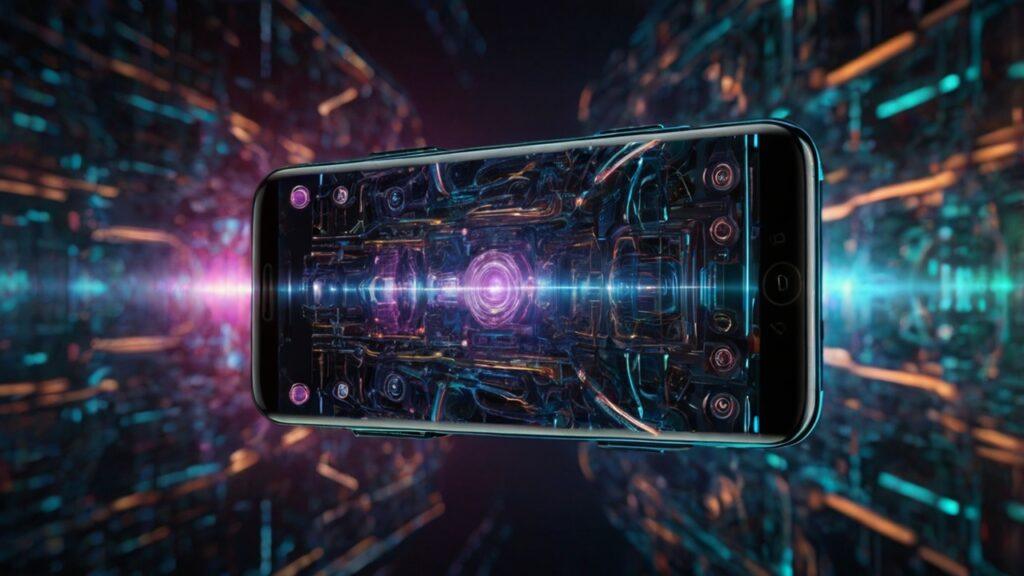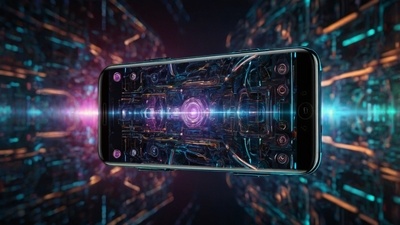
The Dawn of Computational Photography: How AI-Powered Camera Features Are Redefining Smartphone Imaging
The smartphone camera has evolved from a mere afterthought to a sophisticated imaging powerhouse, largely thanks to the relentless advancement of AI-powered camera features. What once required bulky DSLRs and extensive post-processing can now be achieved with a device that fits in your pocket. This revolution isn’t just about megapixels; it’s about intelligent algorithms and machine learning working tirelessly behind the scenes to capture stunning photos and videos, transforming even amateur photographers into visual storytellers.
The integration of artificial intelligence into smartphone cameras began subtly, enhancing basic functions like autofocus and exposure. Today, however, AI is at the core of almost every aspect of mobile photography, from recognizing scenes and optimizing settings to enhancing detail and correcting imperfections. This shift has democratized high-quality imaging, making professional-grade results accessible to everyone. Whether you’re capturing fleeting family moments, breathtaking landscapes, or simply your morning coffee, AI-powered camera features are ensuring your shots are always Instagram-ready.
Beyond the Lens: Understanding the Mechanics of AI in Smartphone Cameras
At its heart, AI in smartphone cameras leverages machine learning models trained on vast datasets of images. These models enable the camera to understand the content of a scene in real-time, much like a human brain interprets visual information.
- Scene Recognition and Optimization: Modern smartphones can instantly identify what you’re pointing the camera at – be it a pet, food, a sunset, or a cityscape. Once recognized, the AI automatically adjusts parameters like exposure, color saturation, contrast, and white balance to suit the specific scene. This means vibrant food photos, true-to-life portraits, and dramatic landscapes without manual tweaking. Samsung’s latest Galaxy phones, for example, use advanced scene optimizers that fine-tune dozens of elements to deliver the best shot (samsung.com).
- Computational Photography Algorithms: This is where AI truly shines. Traditional photography relies on the lens and sensor to capture light. Computational photography, however, uses software algorithms to create images that go beyond what a single lens and sensor can achieve.
- HDR (High Dynamic Range): AI stitches together multiple exposures – some underexposed, some overexposed, and some normal – to create a single image with detail preserved in both bright highlights and dark shadows. This is crucial for shooting against bright light or in high-contrast environments.
- Night Mode: Perhaps one of the most impressive AI-powered camera features, night mode uses AI to capture multiple frames over several seconds, stabilize them, and then intelligently merge them. It identifies noise and reduces it, brightens dark areas without blowing out highlights, and enhances color accuracy, resulting in surprisingly bright and detailed low-light photos that were once impossible on a smartphone. Google Pixel phones were pioneers in this area with their groundbreaking Night Sight (blog.google).
- Portrait Mode/Bokeh Effect: AI uses depth mapping to separate the subject from the background, artificially blurring the background (bokeh) to create a professional-looking portrait with a shallow depth of field. Advanced algorithms can even differentiate between hair strands and clothing edges for more precise cutouts.
- Image Stabilization (OIS, EIS, and AI-Enhanced): While Optical Image Stabilization (OIS) and Electronic Image Stabilization (EIS) have been around for a while, AI takes them to the next level. AI algorithms can predict motion and further smooth out shaky footage in videos, making handheld cinematic shots a reality. Some phones even offer “action modes” that use AI to stabilize incredibly active scenes.
The Rise of Intelligent Editing and Enhancement
The power of AI-powered camera features extends beyond capture. Post-processing, once the exclusive domain of professional photo editors, is now largely automated and enhanced by AI directly on the device.
- Object and Subject Removal: Ever wish you could remove that photobombing stranger or distracting power line from your perfect shot? AI-powered tools are now capable of intelligently removing unwanted objects or subjects from photos, seamlessly filling in the background. Google Photos’ Magic Eraser is a prime example of this technology in action.
- Face and Body Retouching: While sometimes controversial, AI can perform subtle retouches on faces and bodies, smoothing skin, brightening eyes, and even adjusting facial features. Many phone manufacturers offer these features built into their camera apps.
- Smart Cropping and Framing: AI can analyze the composition of an image and suggest optimal crops and framing to enhance visual appeal, helping users create more aesthetically pleasing photographs without needing an eye for composition.
- Personalized Filters and Styles: Beyond generic filters, AI can learn your editing preferences over time and suggest personalized filters or even apply an artistic style based on other images you like.
Key Players and Their AI Innovations
Almost every major smartphone manufacturer is heavily invested in AI-powered camera features.
- Google Pixel: Renowned for its computational photography, Pixel phones consistently deliver exceptional image quality, particularly in areas like Night Sight, Portrait Mode, and features like Magic Eraser, all driven by Google’s powerful AI chips and algorithms (blog.google).
- Apple iPhone: Apple’s Neural Engine powers its Smart HDR, Deep Fusion, and Cinematic Mode, which uses AI to automatically shift focus between subjects in videos, mimicking professional film techniques. Their photographic styles also leverage AI to apply subtle, personalized edits before the shutter button is even pressed (apple.com).
- Samsung Galaxy: Samsung integrates AI across its camera system, from scene optimization and remastering old photos to Space Zoom and enhanced video stabilization. Their latest flagships often feature advanced AI capabilities for both still photography and video recording, offering a comprehensive and versatile camera experience (samsung.com).
- OnePlus, Sony, LG, Motorola: These Android brands are also rapidly advancing their AI camera capabilities, focusing on improving low-light performance, color accuracy, and user-friendly features that make photography accessible to all. From enhanced selfie cameras to advanced pro modes, AI is a common thread across their offerings from manufacturers like OnePlus (oneplus.com), Sony (sony.com), LG (lg.com), and Motorola (motorola.com). Other brands like Razer (razer.com), RedMagic (redmagic.gg), Asus (asus.com), and Oppo (oppo.com) are also pushing boundaries with their AI implementations.
The Future of Smartphone Photography: What’s Next?
The evolution of AI-powered camera features is far from over. We can anticipate even more groundbreaking innovations in the coming years:
- More Sophisticated Video Capabilities: Expect AI to further enhance real-time video processing, enabling cinematic effects, advanced stabilization, and even intelligent editing suggestions directly on device.
- Generative AI in Photography: Imagine an AI that can not only remove objects but also generate entirely new elements into your photos, such as adding clouds to a dull sky or changing the season of a landscape. While nascent, this technology holds immense potential.
- Personalized Photography Assistants: AI could learn your photographic style and preferences even more deeply, offering proactive suggestions for composition, lighting, and even guiding you on how to take better photos in various situations.
- Improved Accessibility: AI can help visually impaired users “see” their photos through descriptive captions and make camera interfaces more intuitive for everyone.
The continuous advancements in mobile processors, coupled with increasingly sophisticated AI models, will push the boundaries of what a smartphone camera can achieve. This means more creative control, higher quality results, and an even more enjoyable photographic experience for users.
Enhance Your Mobile Photography Game
To truly get the most out of your smartphone’s AI-powered camera features, consider pairing it with high-quality accessories. For serious mobile photographers, a versatile mobile lens kit, like the Moment lens line, can expand your creative options, offering wide-angle, telephoto, and macro capabilities (moment.com). A sturdy tripod or gimbal, such as those offered by Joby, can elevate your video stability and enable incredible long-exposure shots (joby.com). Brands like Olloclip (olloclip.com) also provide excellent mobile photography accessories.
Even a simple, well-designed phone case from brands like Anker (anker.com), Spigen (spigen.com), Otterbox (otterbox.com), Nomad (nomadgoods.com), or Urban Armor Gear (urbanarmorgear.com) can protect your valuable camera module. Look into screen protectors from Zagg (zagg.com) or Invisibleshield (invisibleshield.com) for added protection. Charging solutions from RAVPower (ravpower.com), Mophie (mophie.com), and Choetech (choetech.com) are also essential. For audio enhancements, consider devices from Bose (bose.com), JBL (jbl.com), Sennheiser (sennheiser.com), Logitech (logitech.com), Beats by Dre (beatsbydre.com), and Skullcandy (skullcandy.com).
Check out some great options for mobile photography accessories here: Moment Tele 58mm Lens for iPhone, Pixel, Samsung, OnePlus, and More and the Joby GripTight ONE GP Stand Flexible Smartphone Tripod. Also consider the Anker Portable Charger, PowerCore Slim 10000 or the Spigen Tough Armor Designed for iPhone 15 Pro Max Case for reliable power and protection.
As technology continues to advance, staying informed and learning how to leverage these tools is crucial for creators and enthusiasts alike. If you’re passionate about diving deeper into the world of online entrepreneurship, affiliate marketing, and building your own digital content platform, a supportive community and comprehensive training can make all the difference. Explore a platform that offers resources for learning and growing in the online business space, including valuable insights into SEO, content creation, and leveraging trending technologies like AI in your niche: (wealthyaffiliate.com).
The era of computational photography is here, and AI-powered camera features are at the forefront, continually redefining our expectations of mobile imaging. Embrace these intelligent tools, and unleash your inner photographer.

